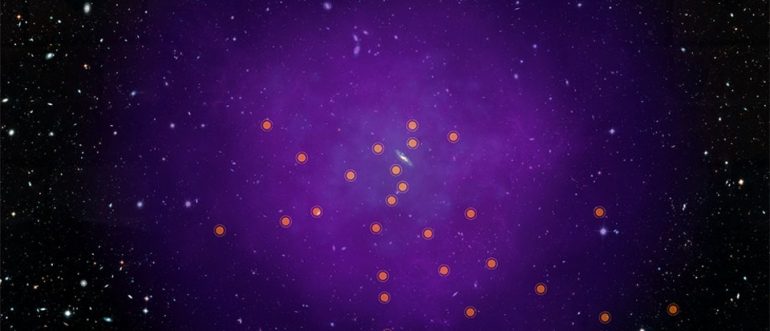Astronomers using the Hubble Space Telescope have mapped the enormous halo of gas surrounding the Andromeda galaxy – the closest large galaxy to our Milky Way.
The map – the most detailed of its kind – shows that the halo of plasma (electrically charged gas) surrounding this spiral galaxy extends about 1.3 million light-years towards the Milky Way (about half of the distance), and as much as 2 million light-years in some directions.
The halo is invisible, but the researchers say that if it could be seen, it’d be about three times the width of ‘the Plough’, making it the biggest feature in the night sky.
Read more about galaxies
“Understanding the huge halos of gas surrounding galaxies is immensely important,” said team member Samantha Berek at Yale University in Connecticut, US.
“This reservoir of gas contains fuel for future star formation within the galaxy, as well as outflows from events such as supernovae. It’s full of clues regarding the past and future evolution of the galaxy, and we’re finally able to study it in great detail in our closest galactic neighbour.”
The team found that Andromeda’s halo is composed of two distinct layers. The inner ‘shell’ has a more complex structure than the outer shell, which is likely the result of supernovae in the galaxy’s disk. These violent explosions – the death throes of giant stars – also eject heavy elements into space, which were detected in high amounts in the halo.
The halo was mapped by studying the ultraviolet light from 43 distant quasars – extremely luminous galactic cores that are powered by black holes – located behind the halo.
The researchers used Hubble’s ‘Cosmic Origins Spectrograph’ to analyse how this background light was absorbed by the halo’s gas in different regions, revealing variations in the gas’s structure.
Andromeda is thought to be similar in size and shape to our Milky Way, so these findings also provide insights into our own galactic halo, which is much trickier to map from inside the galaxy.
Reader Q&A: If the Universe is expanding, why is the Andromeda galaxy on course to collide with the Milky Way?
Asked by: Bazrry Cull, Taumarunui, New Zealand
The expansion of the Universe is a large-scale phenomenon: in general, the further away a galaxy is, the faster it recedes from us. But over small regions of space, this expansion is negligible compared to the motion of individual galaxies.
The Andromeda and Milky Way galaxies are sufficiently large – and sufficiently close together – to create a gravitational force that overcomes the general expansion and pulls them together. But don’t worry, the collision won’t happen for another four billion years.
Read more:

Devoted web advocate. Bacon scholar. Internet lover. Passionate twitteraholic. Unable to type with boxing gloves on. Lifelong beer fanatic.





